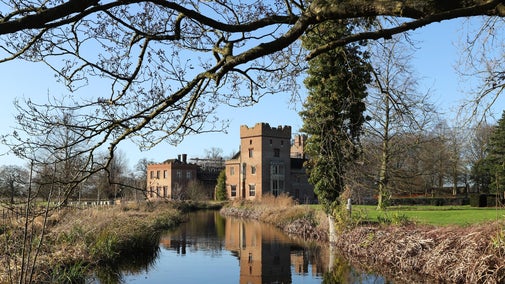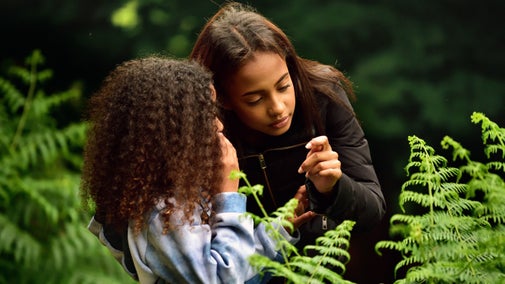
Donate
Everyone needs nature, now more than ever. Donate today and you could help people and nature to thrive at the places we care for.

As wild as Godrevy feels, this rugged landscape requires a constant cycle of maintenance and care. From regenerating wildflowers to keeping walking routes clear, our work helps to preserve the balance between nature and the people who come here.
The land at Godrevy has been farmed for centuries. The latest custodians of the headland are the National Trust ranger team who are working to protect and restore the area.
One of the things they have been doing is to plant wild seed margins, to bring more wildlife back to the heart of the farm. This provides wildlife-rich corridors to link up with the existing coastal habitats nearby. On site, the team are creating more flower-rich meadows, planting trees and making changes to the management of the Cornish hedges that weave through the farm.

The Shetland ponies at Godrevy are happy in the blustery exposed conditions on the headland. They're out grazing all year round, which helps to keep vegetation under control.
Ponies are actually selective grazers and don't tend to eat flowers. This means they're happy munching their way through grass stems, gorse and cut vegetation. They also trample the ground, which, in moderation, is beneficial as it opens the sward, allowing the plants and wildflowers to flourish.
Local graziers run their small herds of cattle throughout the year to work alongside the ponies.
We're restoring and creating wildflower meadows, which hugely benefit wildlife and the environment.
Initially crops of barley were grown to reduce the excess nutrients in the soil - an essential part of meadow creation. The restoration work also includes sowing hay rattle to suppress the grass to make space for wildflowers to thrive.
Among the flowers found at Godrevy are the purple eyebright (a version of the more common white eyebright) and white bell heather (a version of the more common purple bell heather). Common centaury, goldenrod, St John’s wort and wild carrot also flower here.
The Knavocks has been grazed by ponies for over 10 years now, and swathes of saw-wort have been flowering for the last few years. If it wasn't for clearing and grazing, these wildflowers wouldn’t be here.
Wider and more accessible paths have been created to allow visitors to explore the headland and soak up the expansive views along this rugged stretch of coastline. You can help by sticking to the footpaths and keeping dogs on leads.
This also helps protect the history underfoot. Much of this area is designated a Scheduled Ancient Monument, and archaeologists have discovered that the headland has been farmed since way back in history. Indeed, the name Godrevy is derived from the Cornish word meaning 'small farm'.

Godrevy is a magnet for sun worshippers, surfers, picnickers, swimmers and walkers, to name but a few. It’s also home to ground-nesting birds, small mammals, reptiles and rare invertebrates. The rangers and welcome team work hard to ensure that wildlife thrives and people continue to enjoy the area.
Godrevy is a particularly important site for a large number of grey seals. Peering down from the viewing area, it may feel like they're far away, but we ask everyone to keep a respectful hush so that the seals aren't disturbed as they haul out onto the beach.
National Trust rangers and volunteers are dedicated to looking after the coastal countryside at Godrevy. Next time you visit you may notice the infrastructure which they install and maintain, take a note of the signs and always stick to footpaths. They are passionate about increasing biodiversity in all aspects of their roles, some of their responsibilities include:
Whatever catches your eye on the land, in the sea or in the sky, we’d love to see your pictures of this beautiful wild space. Please share them online by using the hashtag #NTGodrevyWild.
With your ongoing support, we're able to continue our vital conservation work. Thank you for helping to protect these special places.

Everyone needs nature, now more than ever. Donate today and you could help people and nature to thrive at the places we care for.
Learn how the National Trust are working to combat the increasing threat of coastal erosion at Godrevy and exactly why action needs to be taken so quickly.
Discover what to consider as you plan your visit to this sandy beach and its surrounding headlands, including what facilities are available and where is best to park.

From first time surfers to veteran hikers, avid seal spotters to intrepid treasure hunters, there’s something to see and do at Godrevy, whatever your interests.

We believe that nature, beauty and history are for everyone. That’s why we’re supporting wildlife, protecting historic sites and more. Find out about our work.

Read about our strategy, which focuses on restoring nature, ending unequal access and inspiring more people.
